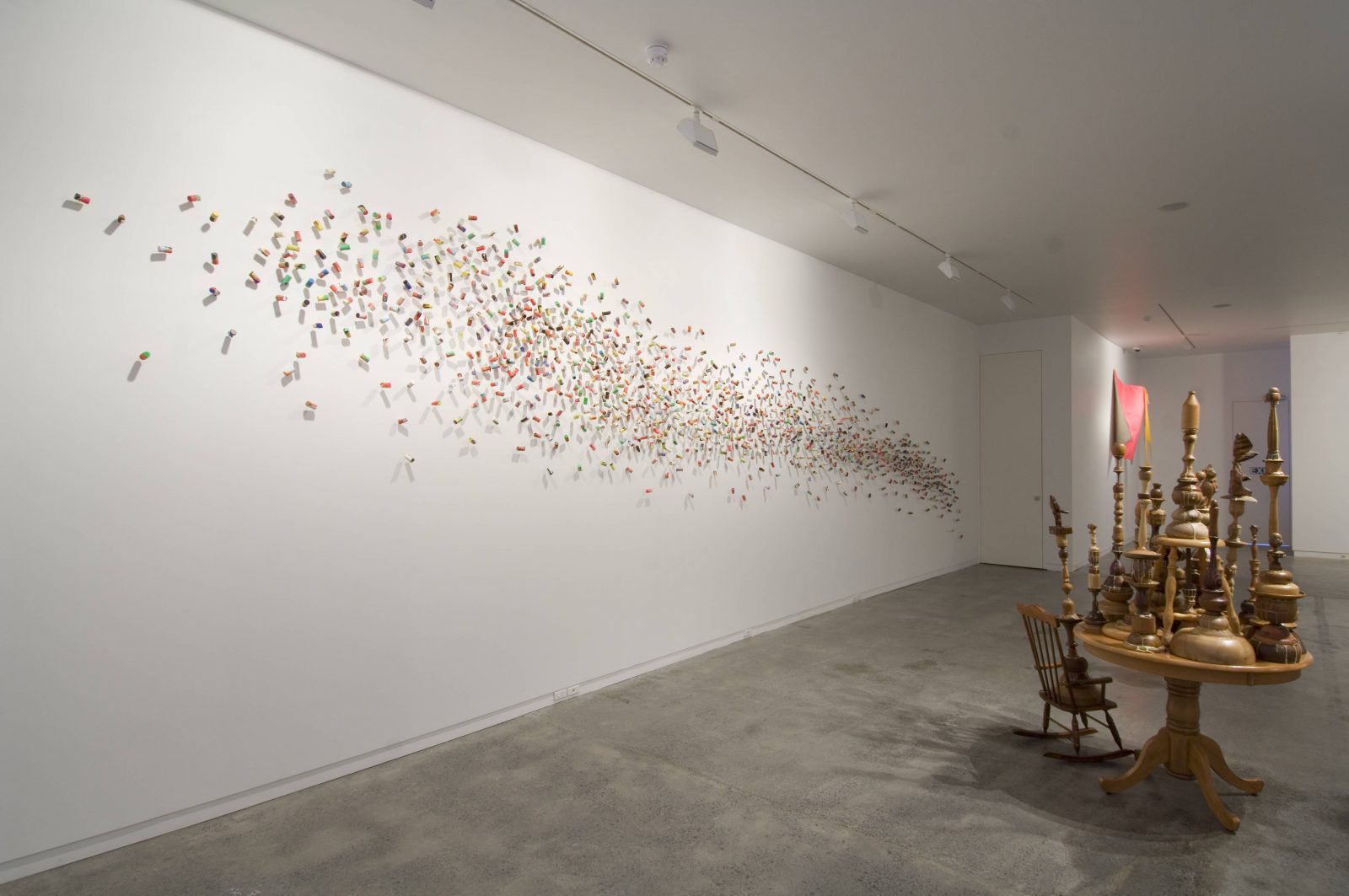Judy Darragh
Studio of Exhaustion for Diligent Service
3 July - 1 August 2009
Throughout her career, Judy Darragh has brought to our attention the flagrant waste of the consumer society by using our left over debris to make witty sculptural assemblages and installations shamelessly reeking of sentiment. She has shown a fondness for everyday objects in particular our national icons such as, pottery, tikis, beads, plastic flowers, paua, dolls, cake tins, bottles and 50’s glassware being just a few of the items crafted into her glorious museum displays.
Just as collecting the classics from the two dollar shop is integral to her work so is the act of making them into something new. Fluorescent acrylic sheeting has been melted to form flower blooms; expanding foam combined with plastic beads to make works dripping from the wall and teetering towers of grandmothers crystal ware are held together with gorilla glue. Notions of high and low art merge, as do concepts of art and craft.
The title of this latest exhibition describes a refuge Darragh has created for the hard working artist who labours to make art works for us. She would like to bring to our attention what an arduous job it is. In previous interviews she has playfully described “ art making as work and the craft as the spanner in the works because of the time it spans”.
There are also some new directions for the artist in this exhibition. Working with Haru Sameshima she has created a series of large-scale colour photographs. A departure from making assemblages with ready-mades Darragh has utilised the traditional technique of turning wooden objects; corseting a floor rug into a magic carpet. Recycling is a continued interest, utilising discarded plastic bottles to make trophies as a reward for the exhausted artist. Yet again she debunks the idea of the grand art work by making collections of small modest objects such as rescued wine corks and subversively questions the values we place on material objects. She has regularly exhibited outside gallery spaces as a commentary on the place of the art market, exhibition, museum and gallery.
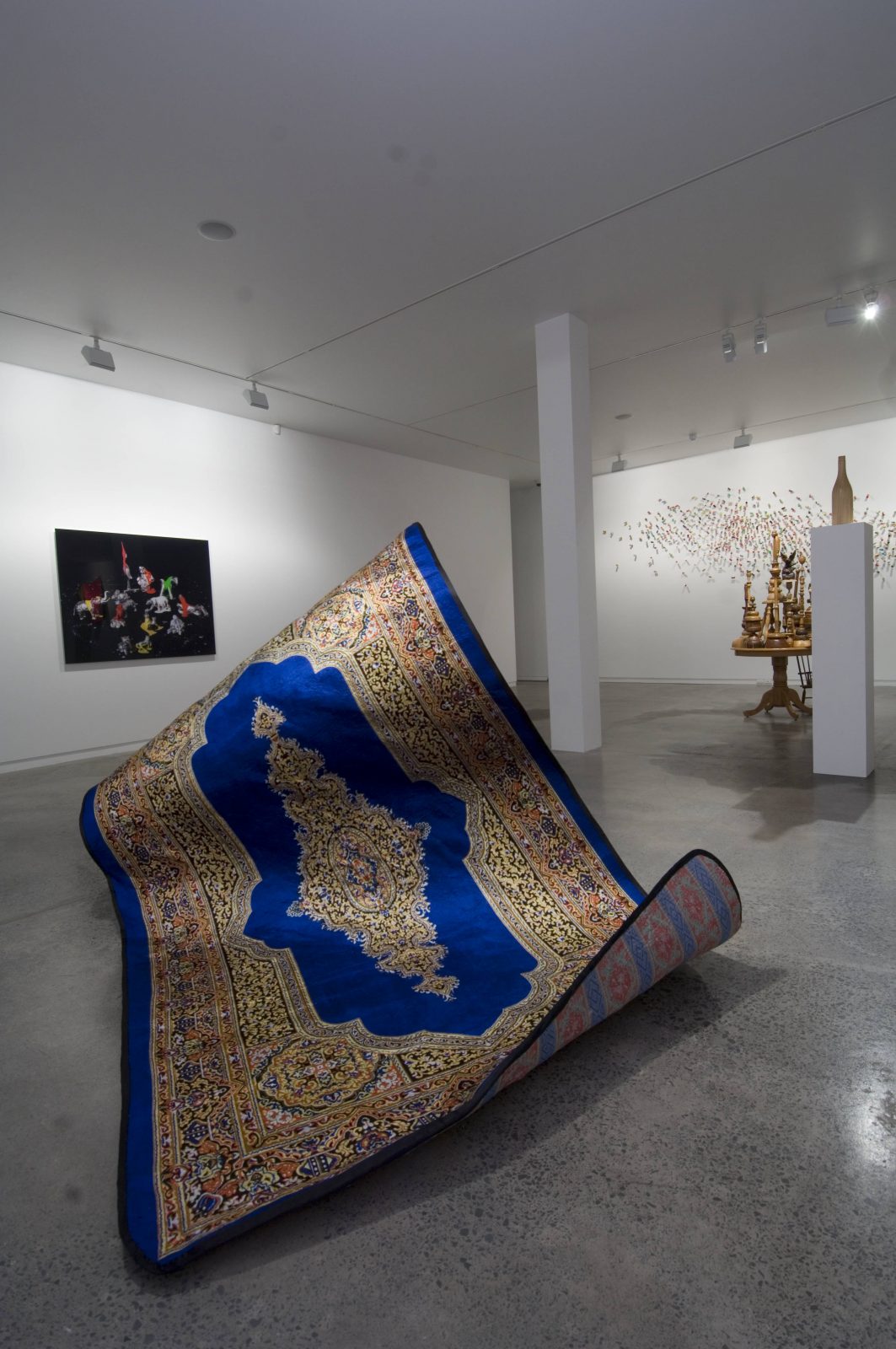
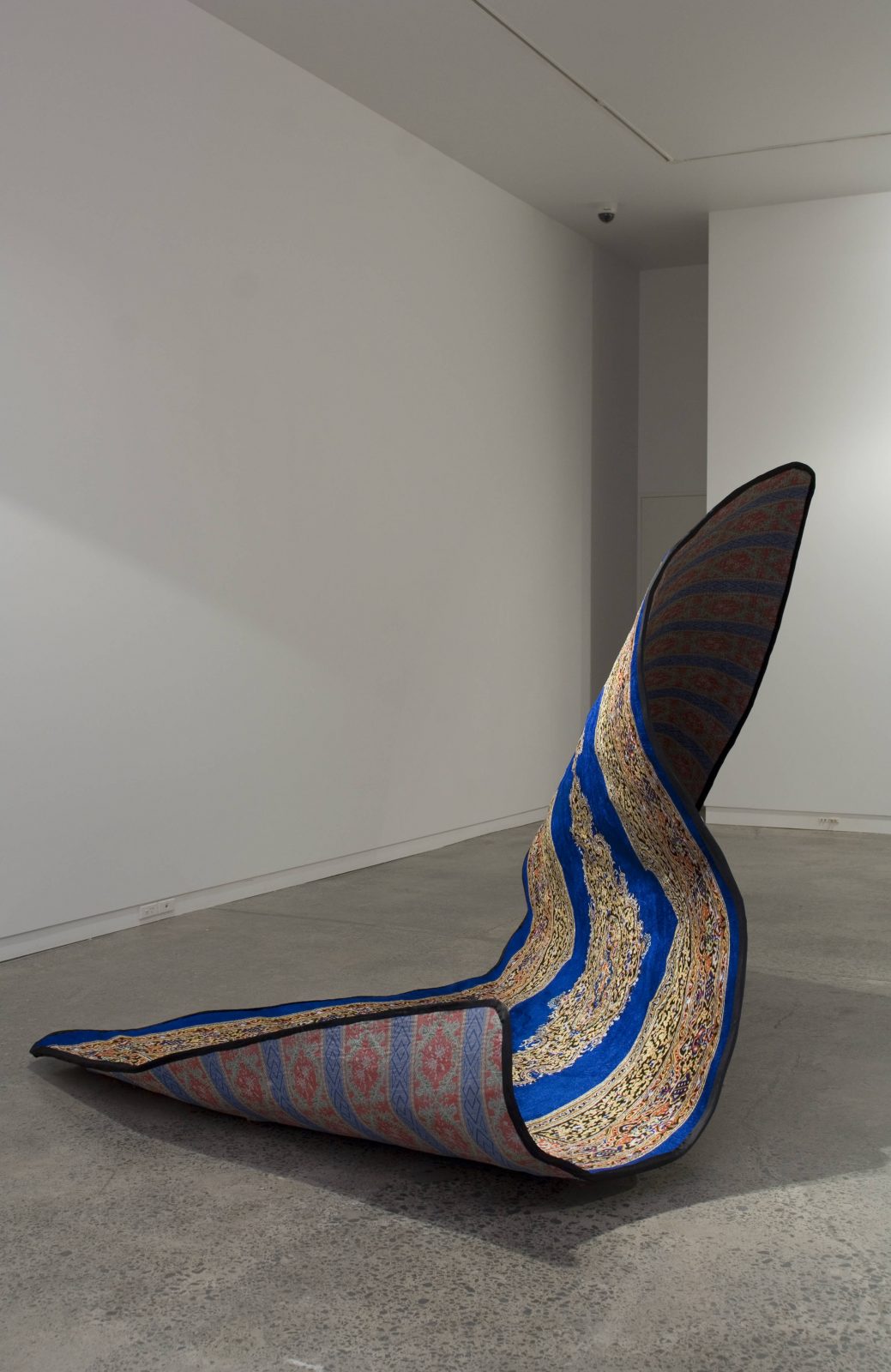
Found mat and reinforced steel
1700 x 2000 x 1600 mm
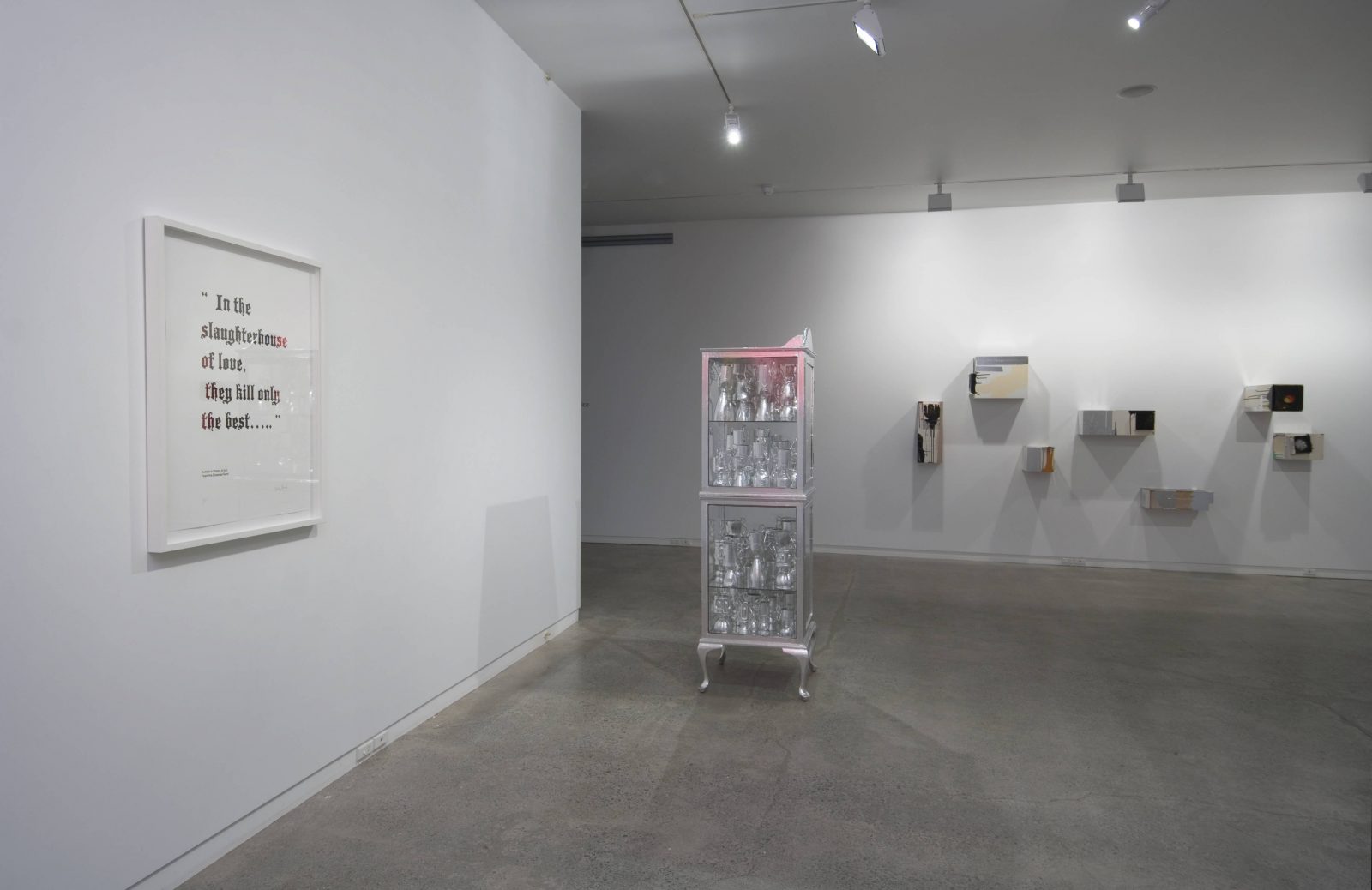
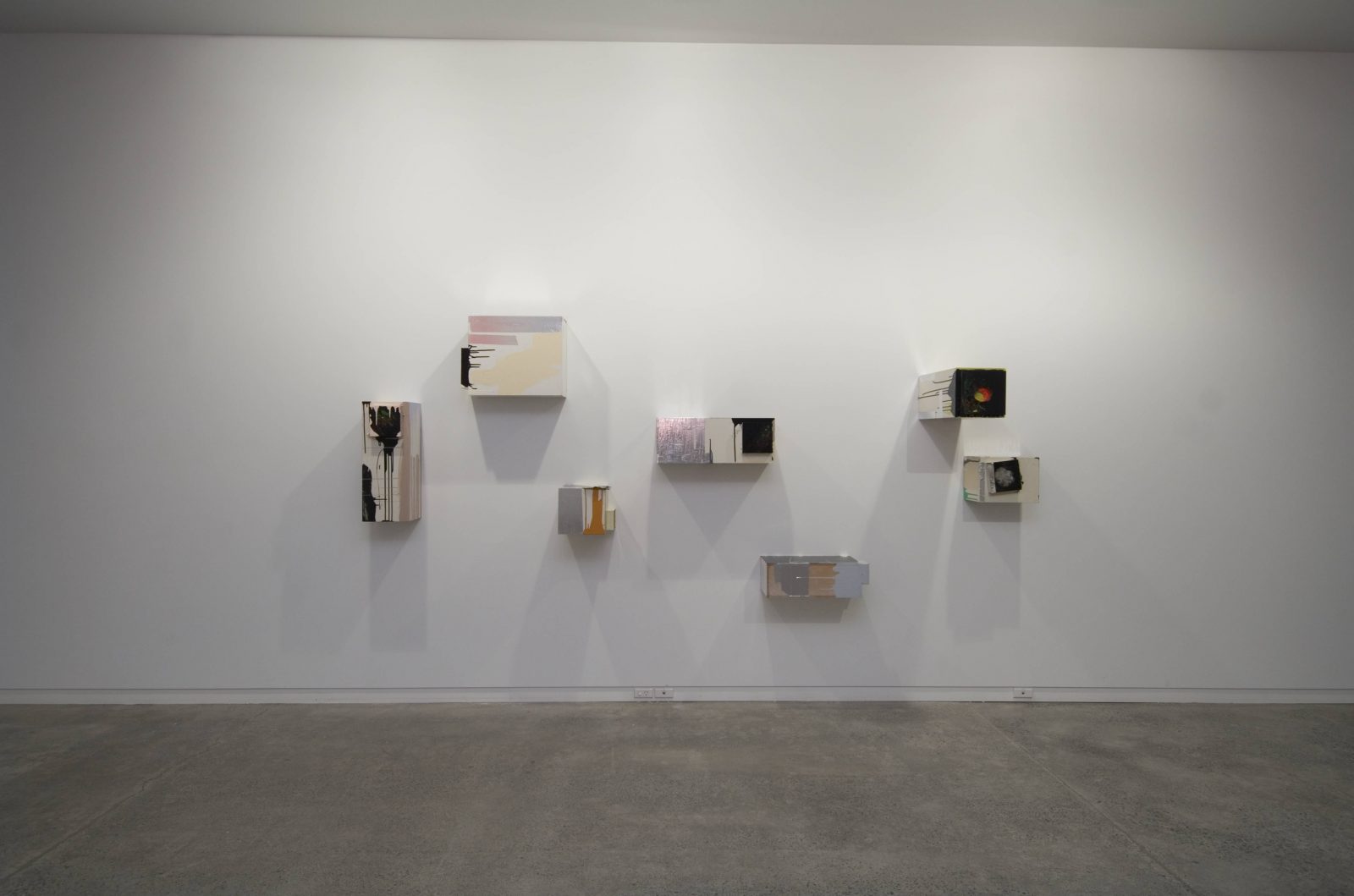
Aluminium tape, acrylic paint, canvas on MDF support
3400 x 1550 x 640 mm
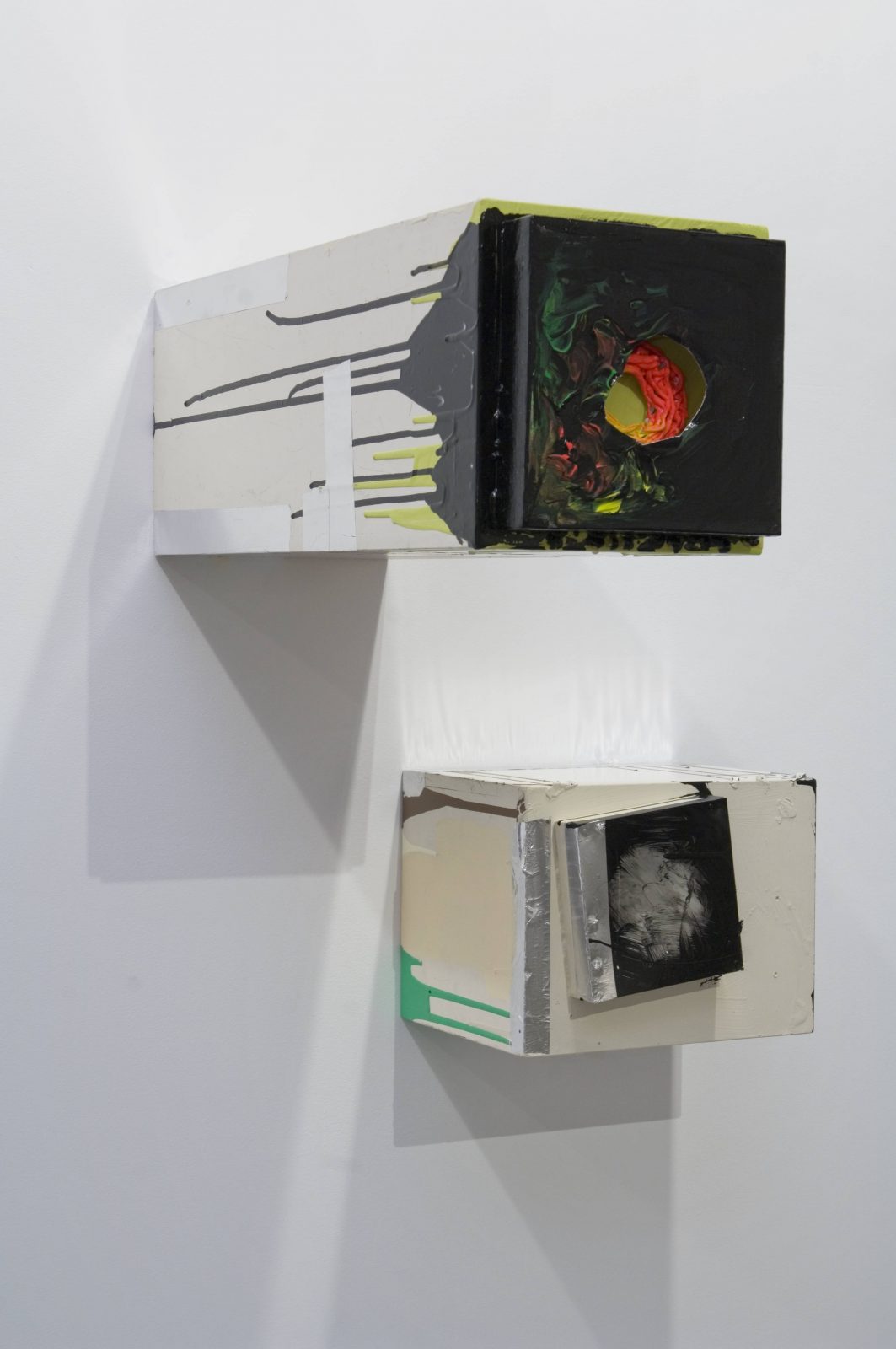
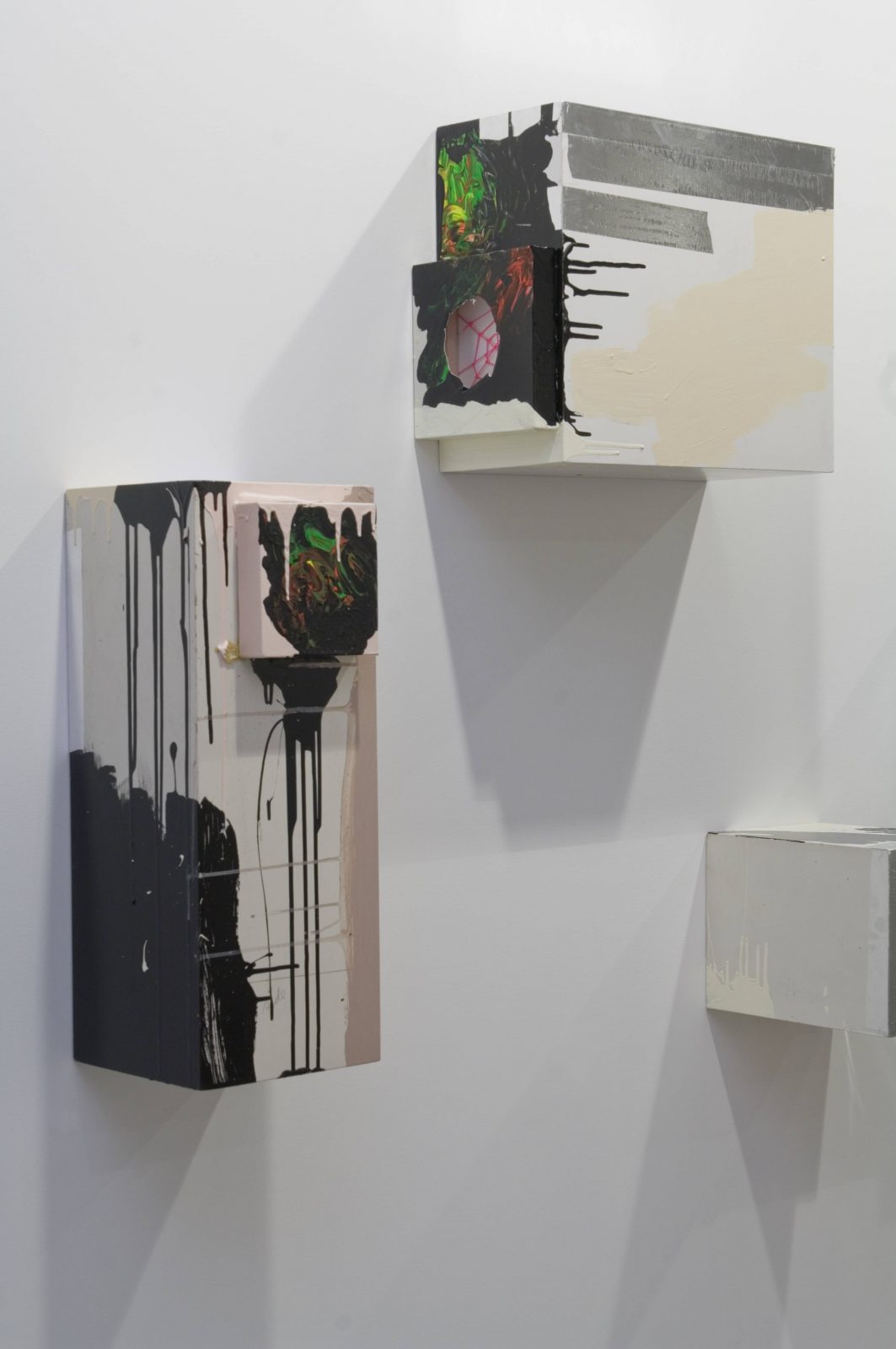
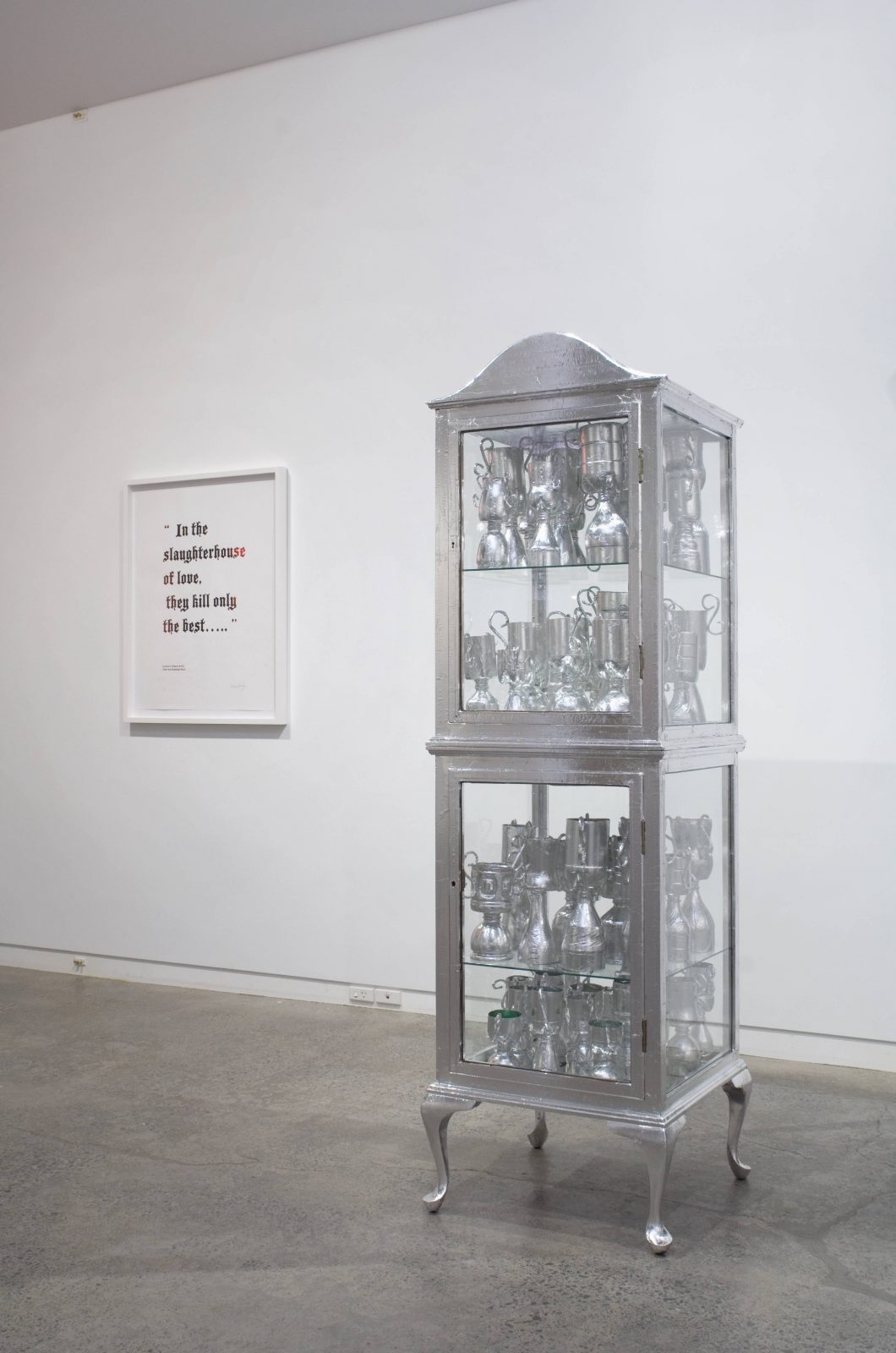
Aluminium tape, oak cabinets and plastic bottles
570 x 1880 x 570 mm
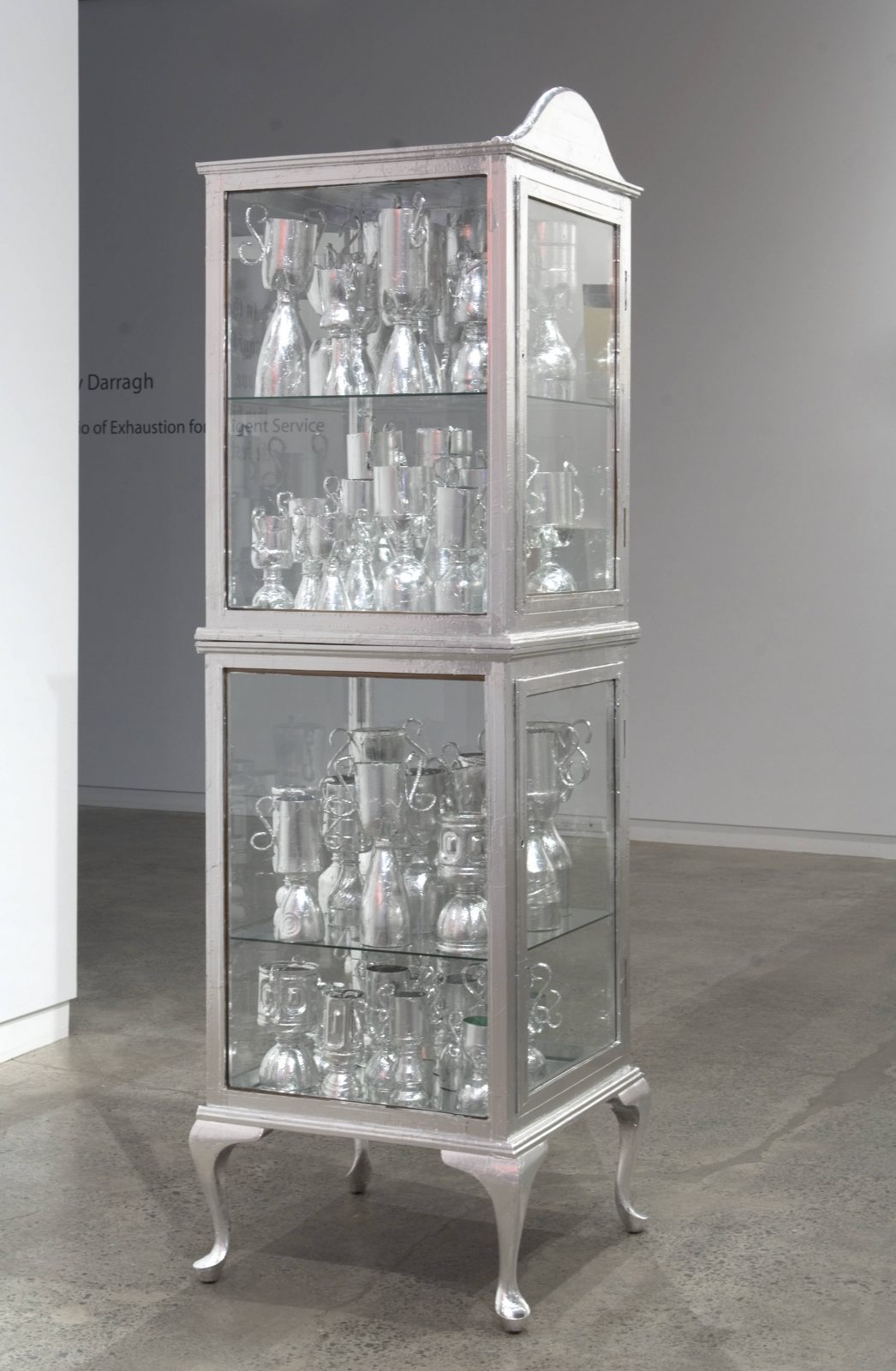
Aluminium tape, oak cabinets and plastic bottles
570 x 1880 x 570 mm
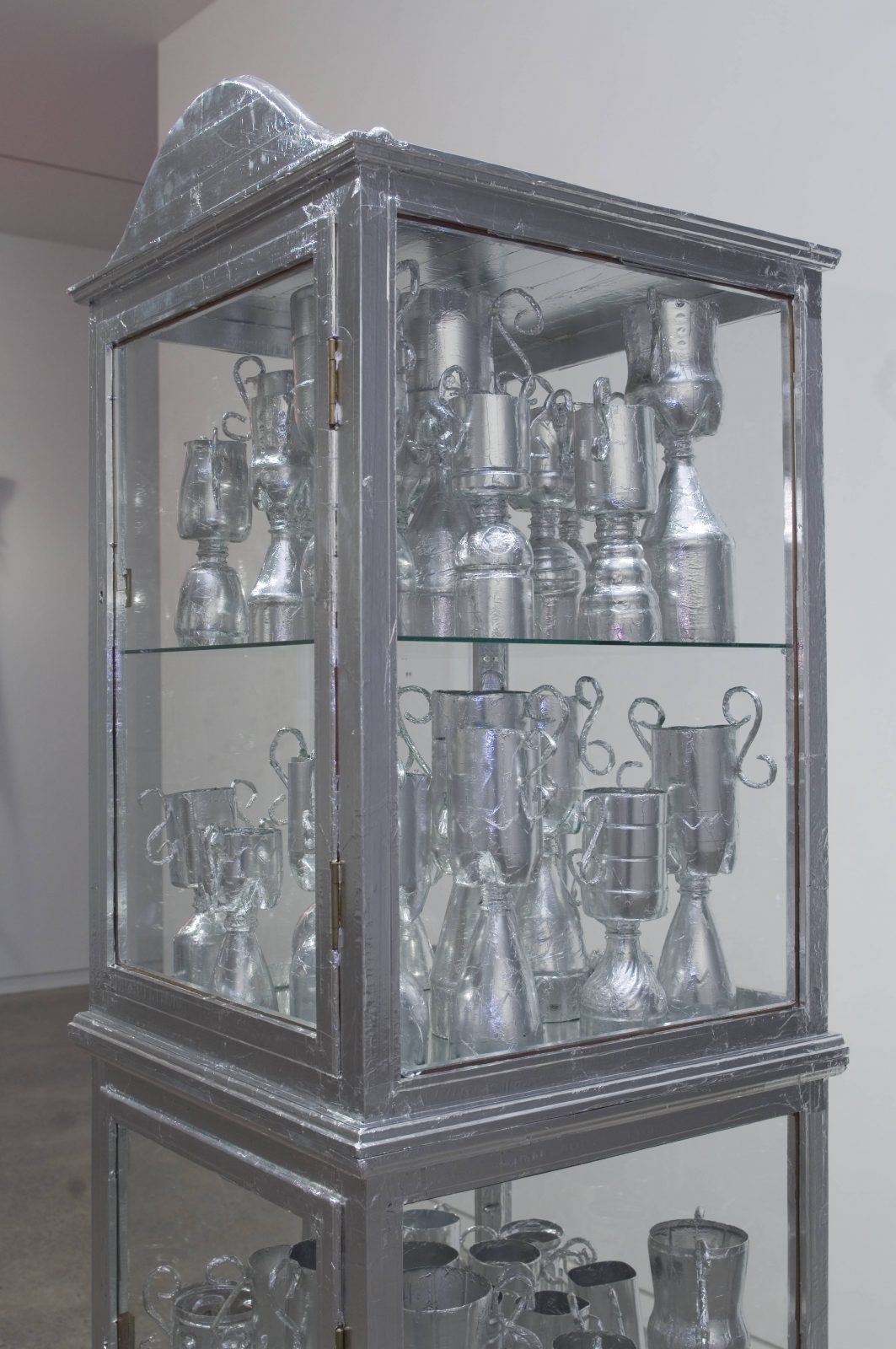
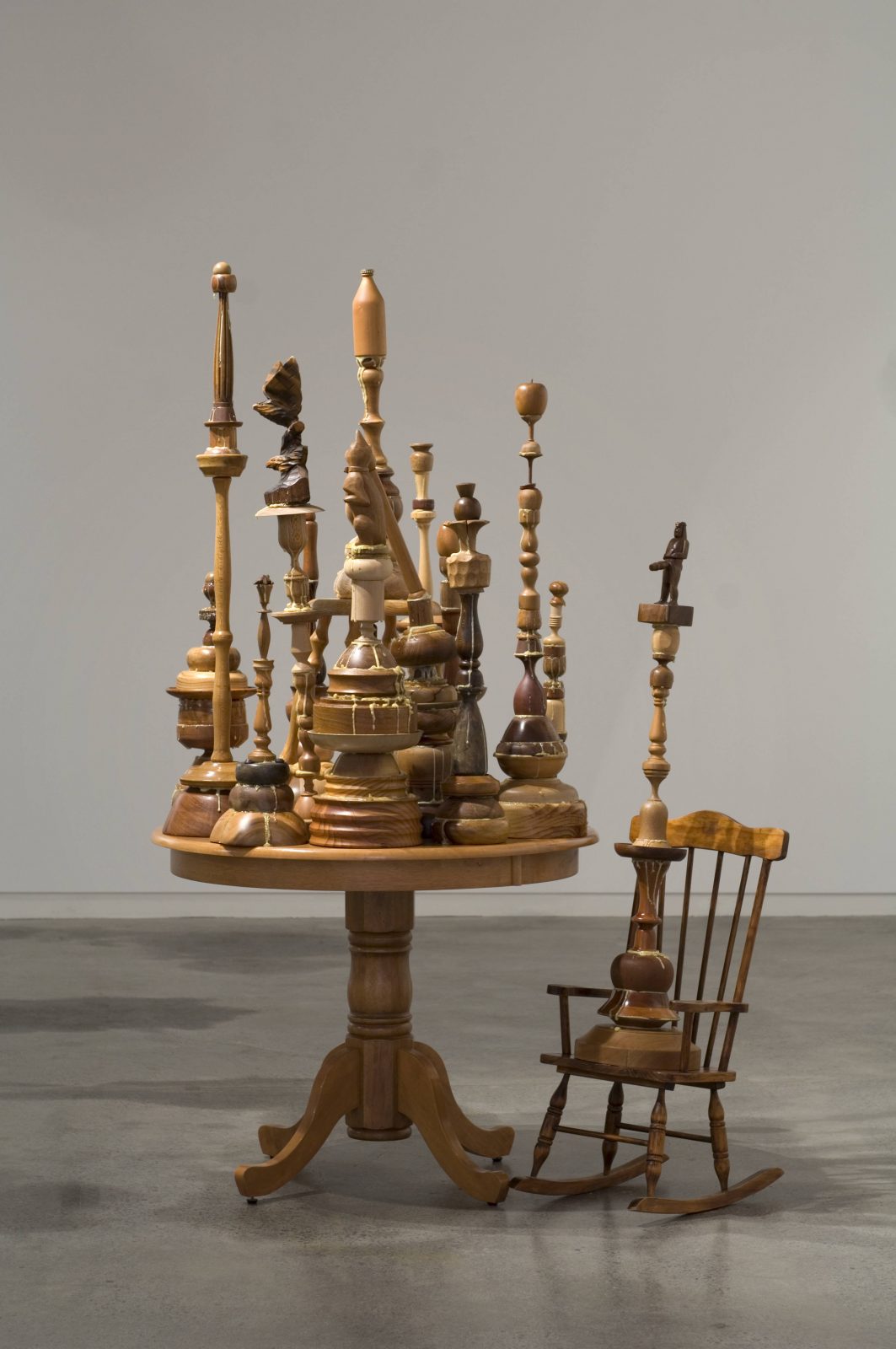
found wooden objects
1500 x 1870 x 1500 mm
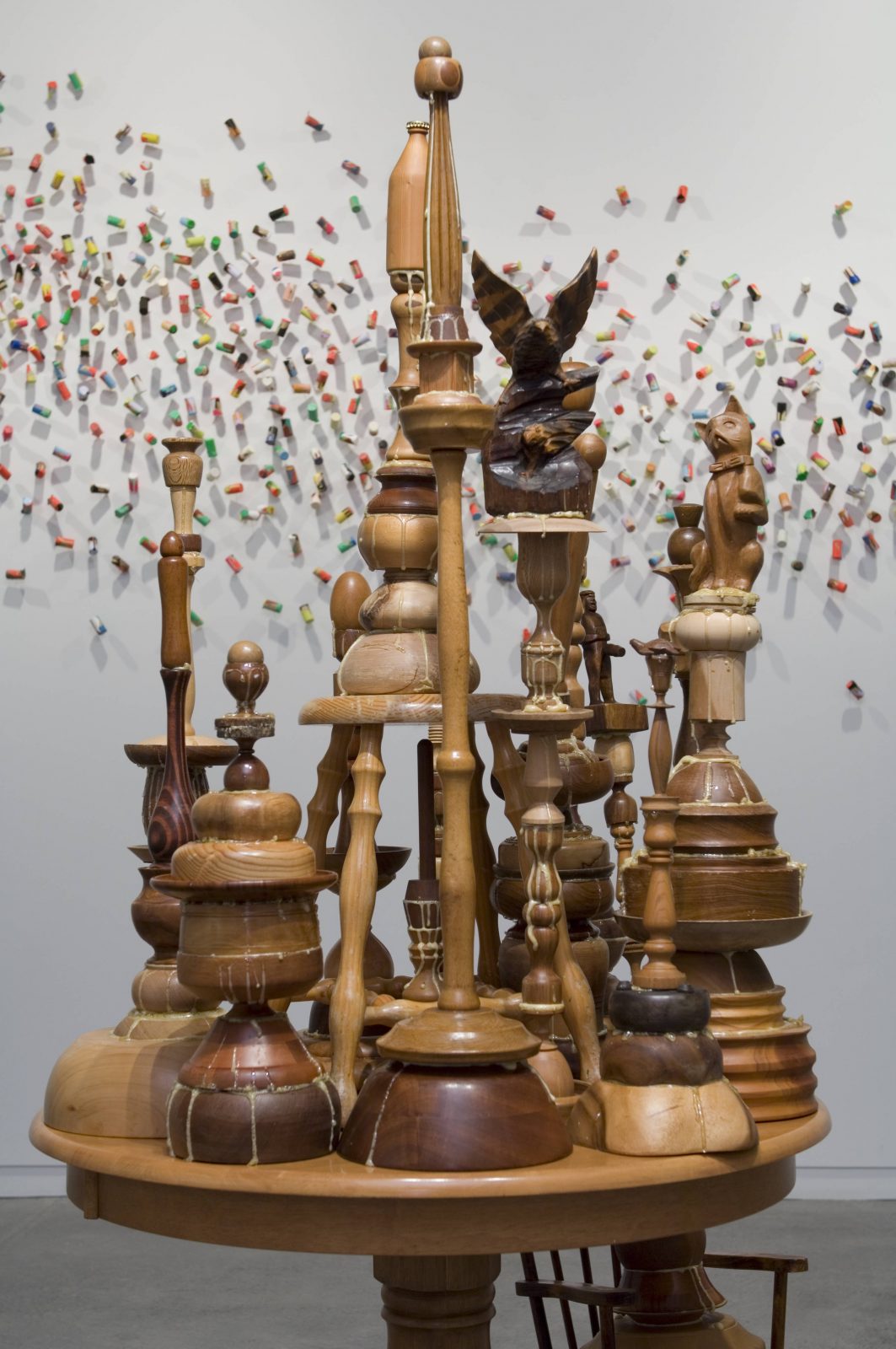
found wooden objects
1500 x 1870 x 1500 mm
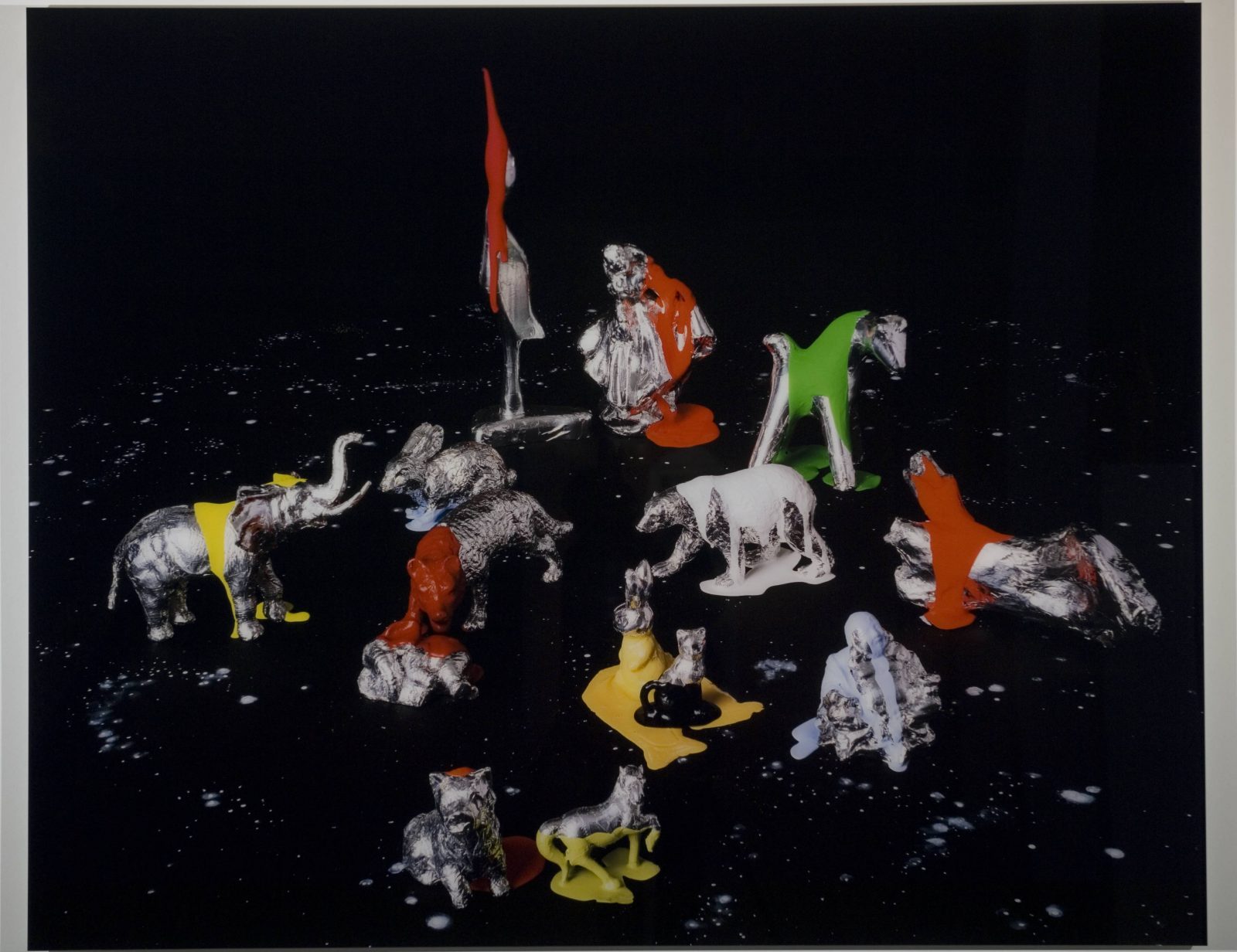
Chromira print on archival paper
1520 x 1210 x 30 mm Moonshine 2008
edition of 3
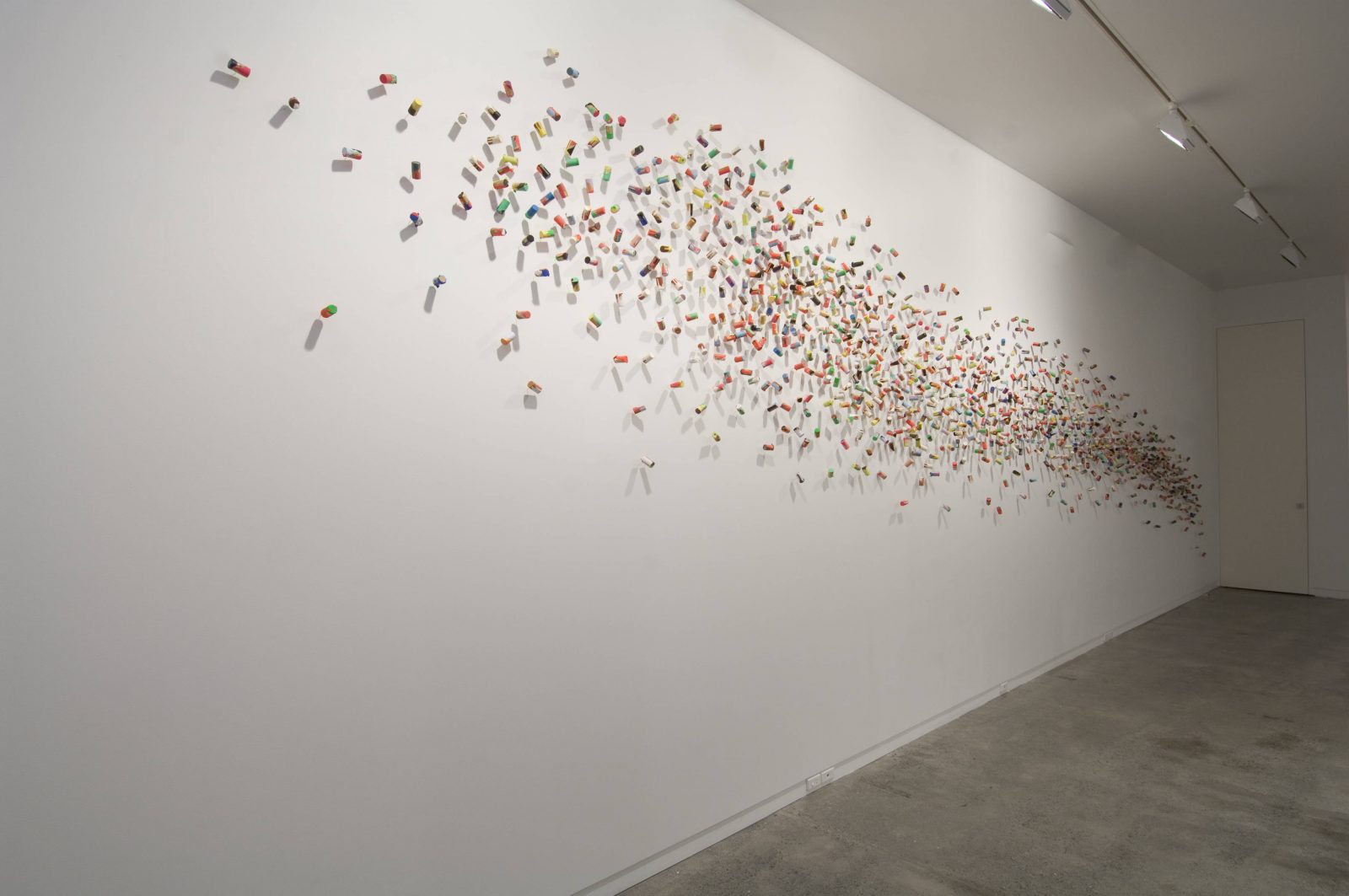
Cork and acrylic paint
8160 x 3000 x 90 mm
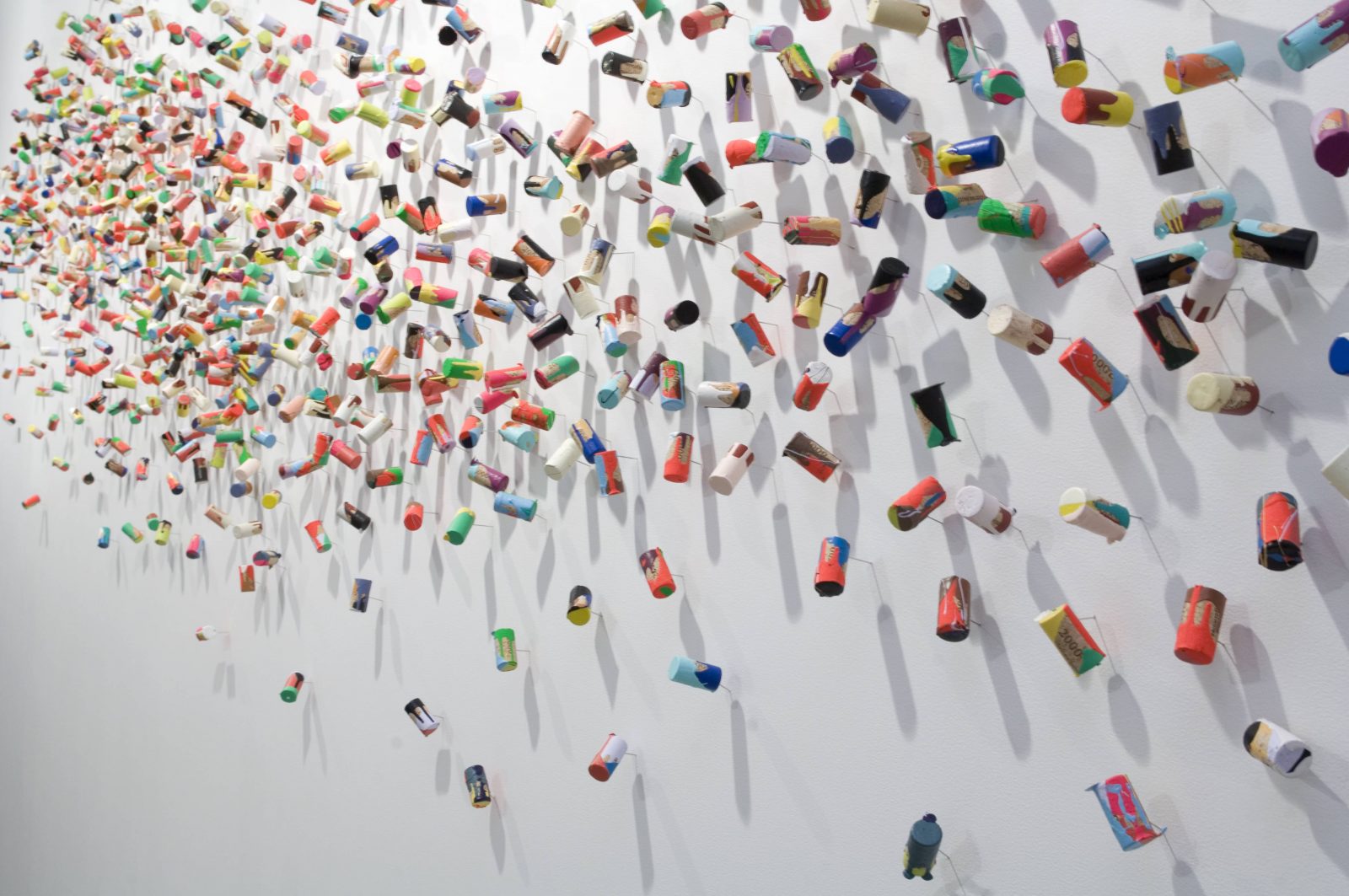
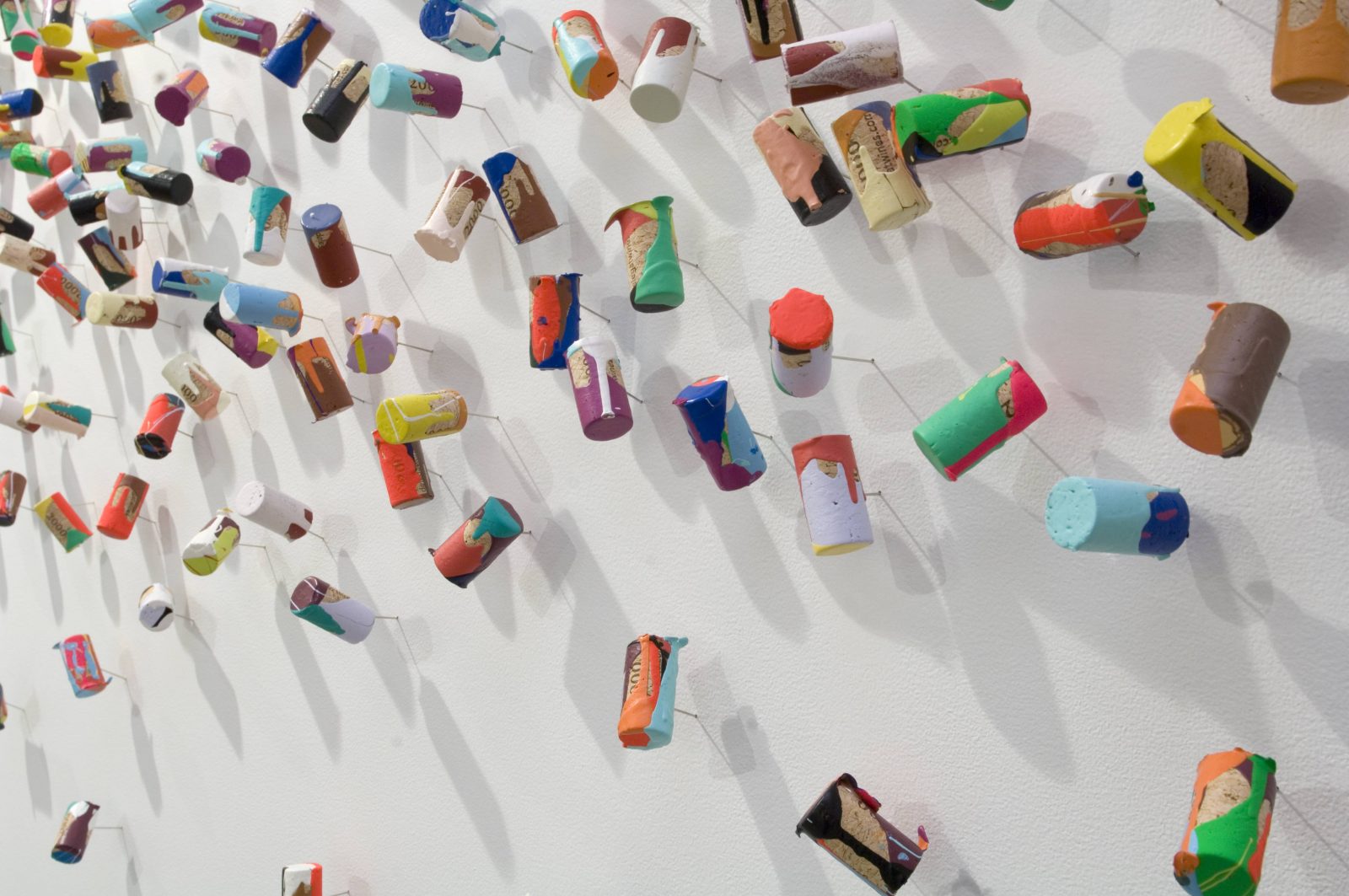
Cork and acrylic paint
8160 x 3000 x 90 mm
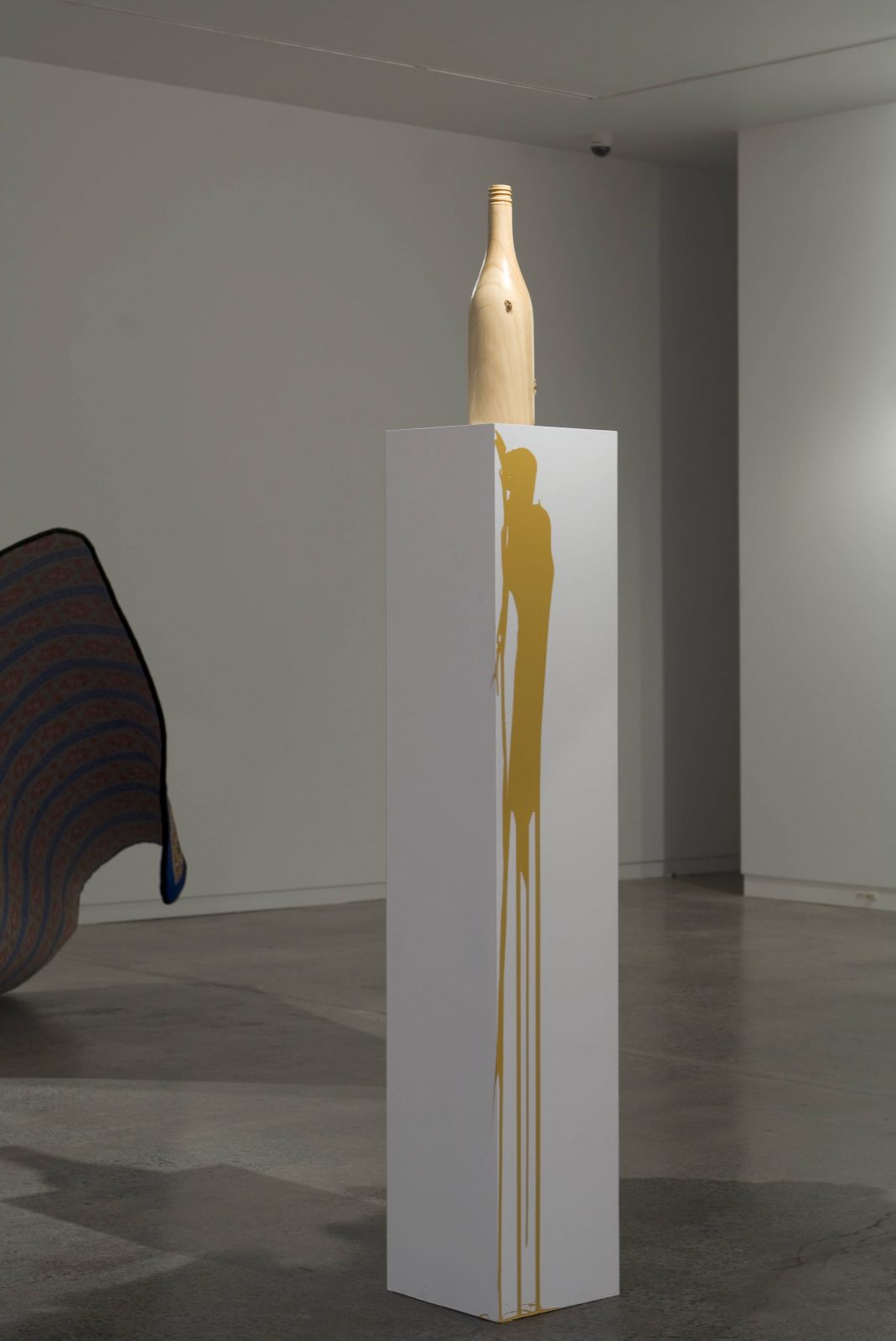
Turned wood, bullets on MDF plinth
305 x 2050 x 305 mm
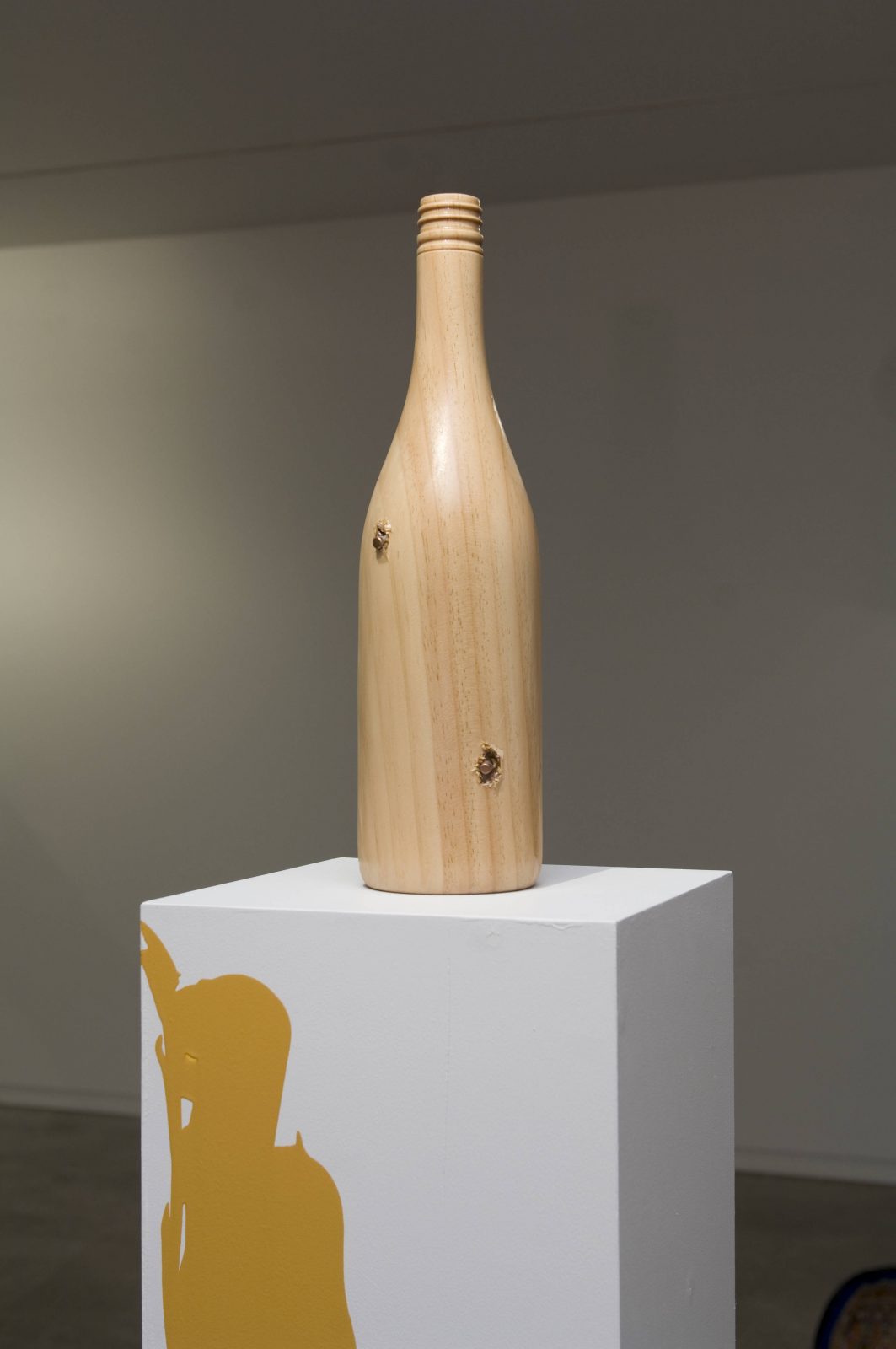
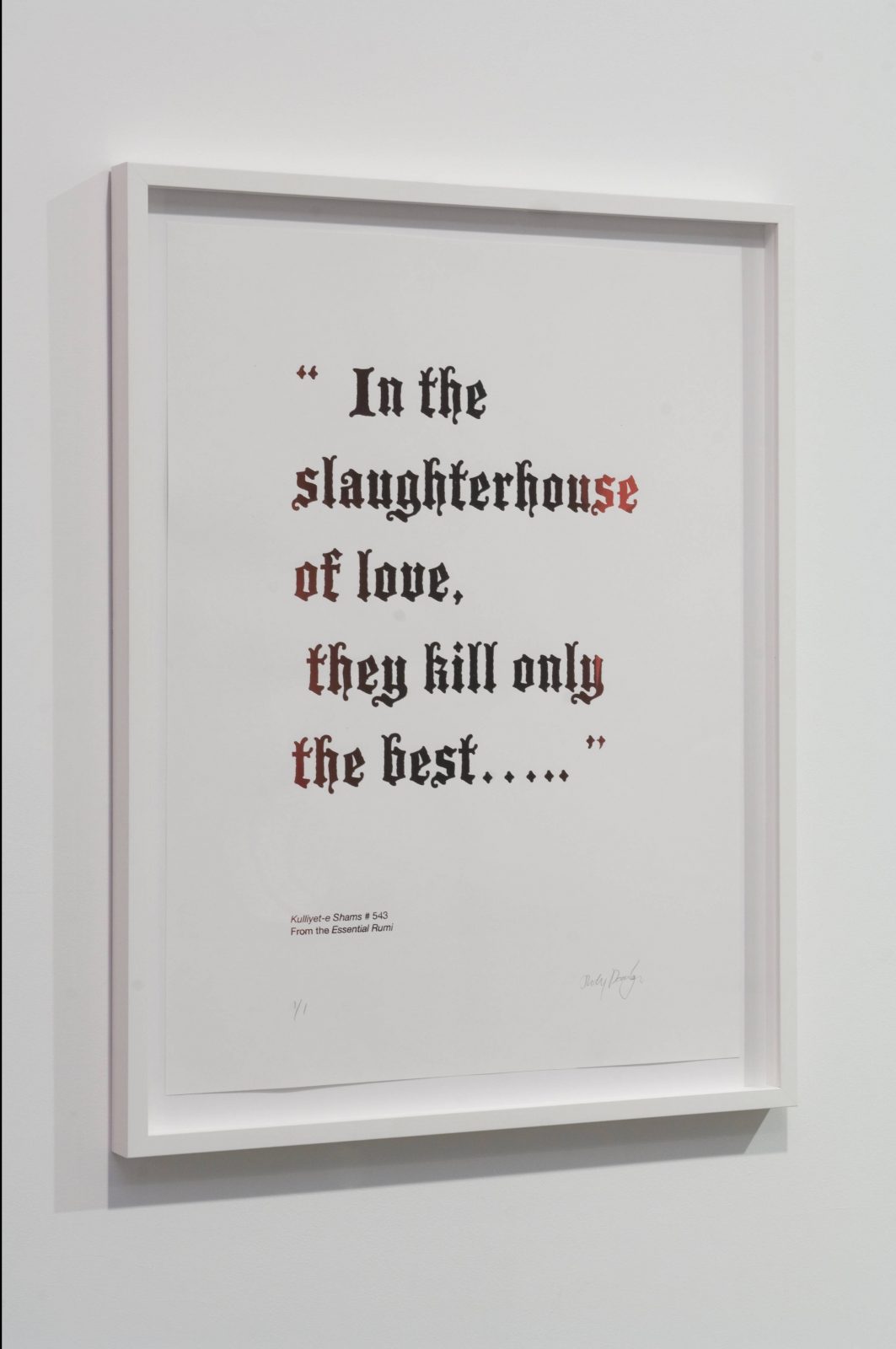
screenprint on paper
620 x 830 mm
edition 1 of 5
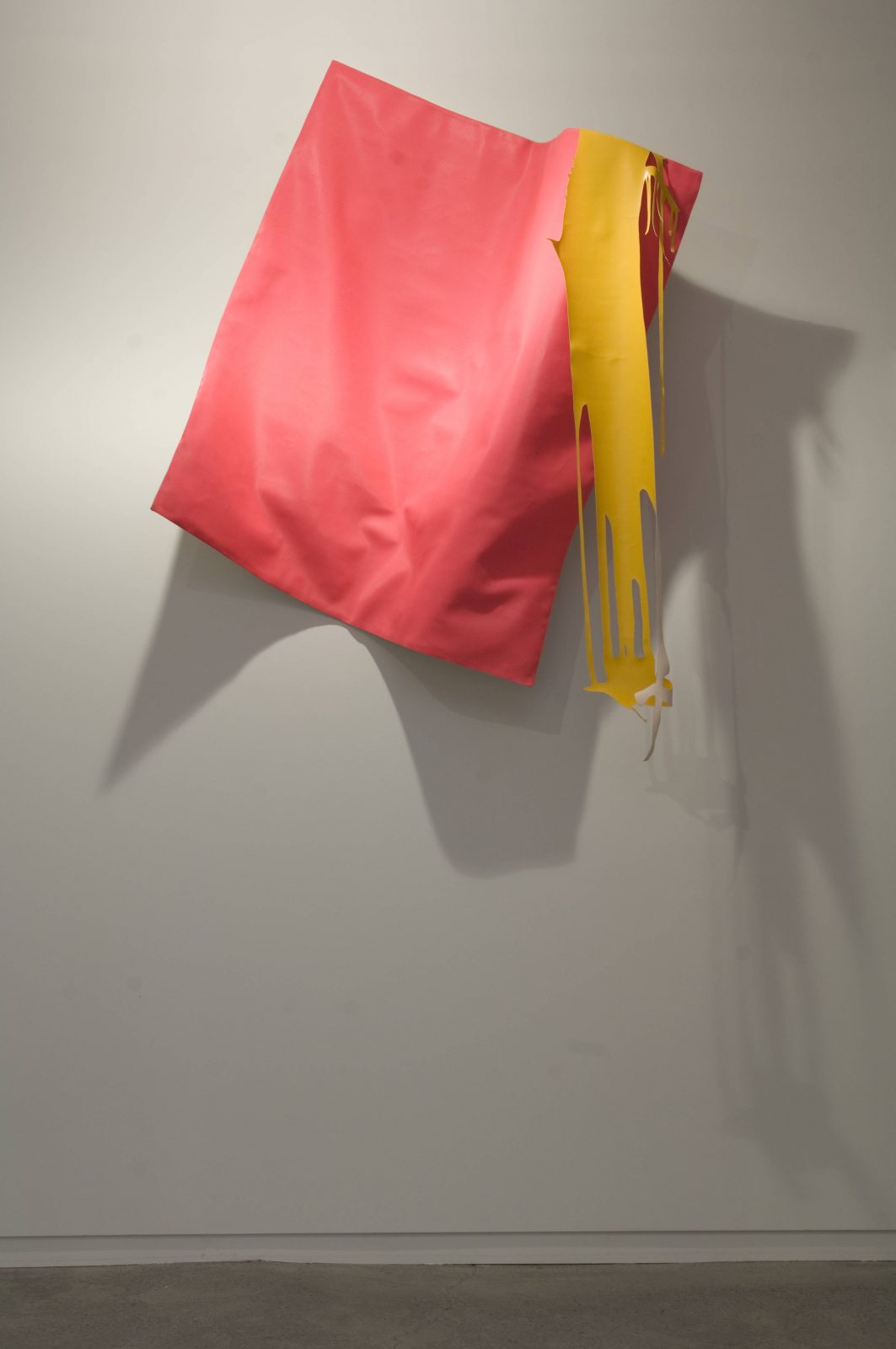
Vinyl, canvas and reinforced steel
1600 x 1800 x 50 mm
